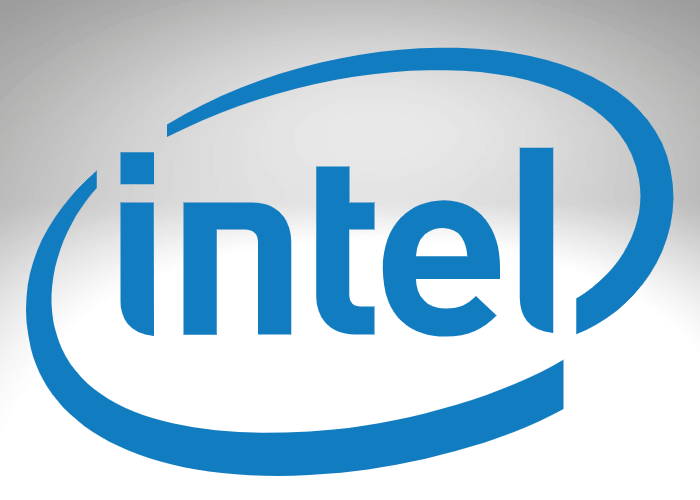How Many Jobs Are Available in Semiconductors?
By My Service Depot on Tuesday, October 11, 2022Intel is paving the way on this venture. They will need fill positions for production, and are looking for 7,000 construction workers to help with expansion.
The global chip shortage has spurred interest in ending U.S. dependence on foreign chipmakers. According to venturebeat, to meet the capacity needs for only the critical semiconductor applications, the U.S. needs to add about 5.5% of the global production.
This would mean about 18 to 20 fabs, and about 70,000 to 90,000 total jobs. These positions will include production engineering, logistics and support, and production operations. This will also mean more construction and skill trade jobs for the construction of the ‘fabs’.
Intel is paving the way on this venture and expanding its chip production in central Ohio. They are looking for 7,000 construction workers to help with the expansion. This is great news for the Columbus area, as it will create jobs and bring more money into the local economy.
This is also Ohio’s largest-ever economic development project, which comes with a big employment challenge: how to find 7,000 construction workers in an already booming building environment when there’s also a shortage of people working in the trades nationwide.
As part of an effort to take back its position as a leading producer of semiconductors amidst a global chip shortage, Intel committed $20 billion in January of 2022 to build a manufacturing mega-site in New Albany, on the outskirts of Columbus, Ohio.
What is the Intel Chip Project in Ohio?

The project, which is still in the early stages, will see two new plants being built on a 202-acre site that was purchased by Intel in 2019. These new chip plants will be used to produce the company’s latest chipsets and microprocessors. When completed, the facility will be one of the most advanced and largest semiconductor manufacturing sites in the world.
The investment made by Intel will help boost production to meet the surging demand for advanced semiconductors, powering a new generation of innovative products from Intel and serving the needs of foundry customers. To support the development of the new site, Intel pledged an additional $100 million toward partnerships with educational institutions to build a pipeline of talent and bolster research programs in the region.
As the largest single private-sector investment in Ohio history, the initial phase of the project is expected to create 3,000 Intel jobs and 7,000 construction jobs throughout the build. It is also expected to sustain tens of thousands of added regional long-term jobs across a wide ecosystem of suppliers and associates.
Spanning nearly 1,000 acres in Licking County, just on the outskirts of Columbus, the mega-site can house a total of eight chip plants which are also known as “fabs” as well as aid operations and ecosystem partners.
How Much Was Invested in This Project?

The project is a $20 billion investment by Intel, which is the largest ever private sector investment in Ohio’s history. The move is part of C.E.O. Pat Gelsinger’s plan to revive Intel’s supremacy in chip manufacturing and decrease America’s reliance on Asian manufacturing hubs, which have a tight hold on the market.
This amount does not include the additional $100 million that was pledged by Intel to go towards partnerships with educational institutions to build a talent pipeline and bolster research programs in the region.
At full buildout, the full investment in the site could increase to as much as $100 billion over the next ten years, making it one of the biggest semiconductor manufacturing sites in the world. To win the project, Ohio offered Intel roughly $2 billion in incentives, including a 30-year tax break.
The Employment Challenge in Today’s Shortage of Workers
For the central Ohio project, all 7,000 workers aren’t needed immediately. They’re also only a part of what will be needed as the Intel project converts hundreds of largely rural acres about 30 minutes east of Columbus.
According to Intel, “One of Intel’s top reasons for choosing Ohio is access to the region’s robust workforce,” the company said. “It will not be without its challenges, but we are confident there is enough demand that these jobs will be filled.”
Many state officials and labor leaders acknowledge there’s not presently a collection of 7,000 extra workers in central Ohio, where additional current projects include a 28-story Hilton around downtown Columbus, a $2 billion expansion to The Ohio State University’s medical center, and a $365 million Amgen biomanufacturing factory not too far from the Intel plant.
And that’s not adding the at least three new Google and Amazon data epicenters, plans for a new $200 million municipal courthouse south of downtown Columbus and solar array projects that may demand nearly 6,000 construction jobs themselves.
Something that is offsetting the imbalance is training and education programs, which is mainly a push to motivate more high school students to enter occupations in the trades and pure economics.
When is Work Slated to Start and Finish?
Nearly six months after announcing Ohio’s biggest economic development project, Intel officially started work on the site in New Albany in July. Gilbane Building, which is headquartered in Providence, Rhode Island, and is among the top commercial construction contractors in Greater Columbus, began excavation work on the nearly 1,000-acre site, according to Intel.
The semiconductor company declared in January that it will pay $20 billion to construct two factories that will be able to utilize 3,000 employees earning an average salary of $135,000 yearly. Intel expects contractors to work Monday through Saturday on the work site.
Production is anticipated to come online in 2025 when the fab will produce chips utilizing the industry’s most cutting-edge transistor technologies. Ohio will be home to Intel’s first new manufacturing site location in 40 years.
Impact that this Plant Could Have
In addition to Intel’s presence in Ohio, the investment is starting to attract several ecosystem partners and suppliers needed to supply local backing for Intel’s operations – from semiconductor equipment and materials suppliers to a range of service providers. Investments made by these suppliers will not only profit Ohio but will have a significant economic effect on the greater U.S. semiconductor ecosystem.
As part of the announcement, Air Products, Applied Materials, LAM Research, and Ultra Clean Technology have demonstrated plans to establish a physical presence in the area to support the buildout of the site, with more businesses expected in the future.
Building this semiconductor site is similar to building a small city, which brings forth a vibrant community of supporting services and suppliers. Ohio is an ideal location for Intel’s U.S. expansion because of its access to top talent, robust existing infrastructure, and long history as a manufacturing powerhouse.
Programs in Place for the Intel Chip Project in Ohio

Shortly after Ohio Governor Mike DeWine’s January announcement that Intel would fund more than $20 billion to assemble two state-of-the-art semiconductor manufacturing facilities in Ohio by 2025, the company on March 17 described the $100 million education part of that commitment.
In a 10-year, $50 million grant program, the company will install the Intel Semiconductor Education and Research Program for Ohio, a collective, multi-institution research and education program that highlights innovation and real-world experience in semiconductor fabrication.
The program aims to build a professional and educated workforce for domestic semiconductor production at Ohio facilities and across the semiconductor development ecosystem. Intel will accept grant proposals for curriculum growth, student internships, faculty training, reskilling and upskilling programs as well as laboratory supplies, upgrades, and backing for research to advance semiconductor production.
How to Get Involved in this Project
There are several ways to get involved in this project, but one easy way that every person has access to is simply searching how to get involved. When I did this, the first result was Columbus States Community College, and the page was labeled “The Future of Chip Manufacturing Careers in Central Ohio“.
Columbus State goes on by saying “Intel is bringing semiconductor or ‘chip’ manufacturing to Ohio with the construction of a $20 billion factory complex in Central Ohio set to open in 2025. With it comes the promise of thousands of good-paying jobs, new opportunities for mobility, and the need to develop education, training, research, and a steady supply of talent to support the booming industry that manufactures the brain of nearly every electronic device that powers daily life and work. Hiring for technician roles will start as early as 2023.”
What This Means for the Future of Chip Production
In the near future, the microchip production industry is expected to see significant growth. This is thanks in part to the increasing demand for electronic devices, as well as the advancement of 5G technology. Microchips are a key component of electronic devices, and 5G technology requires even faster and more reliable chips.
As a result, the demand for microchips is expected to increase significantly in the coming years. In response, chip manufacturers, following in the steps of Intel, are investing heavily in new production facilities and technologies. The industry is expected to see rapid growth in the next few years. This will create new opportunities for suppliers and manufacturers of microchips, as well as for companies that use microchips in their products.
Conclusion
The Intel chip project in Ohio is an exciting development that will have a significant impact on the semiconductor industry. With the right programs in place, this project could provide opportunities for people in the area to get involved in chip production. We are looking forward to seeing how this project progresses and what its final impact will be on the semiconductor market.
If you are looking to start a promising career and aren’t sure about a traditional 4-year degree program, now is the time to consider a trade school. With all of the construction jobs and other field service jobs in Ohio’s pipeline, there has never been a better time to consider these trades.
If you are already in the field service industry working construction or HVAC, make sure your business stays competitive. With Smart Service software you can streamline everyday work processes and automate workflow. Make scheduling, dispatching, and routing efficient and easy. This will allow your company to do more billable work and increase your bottom line. Request a free software demo today! You can also visit the Smart Service Hub to access everything Smart Service, including our website, blog, webinars, and more!

